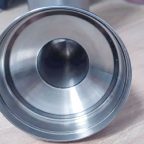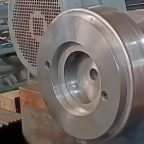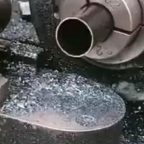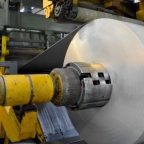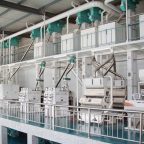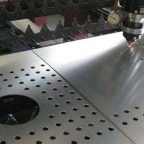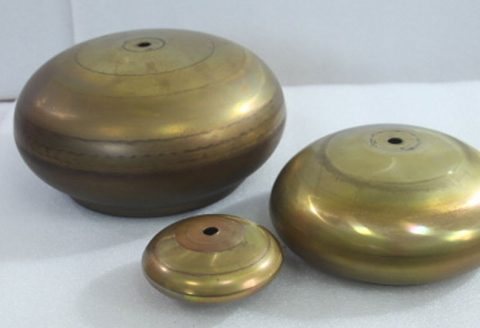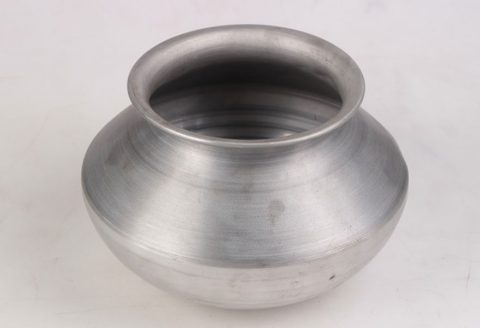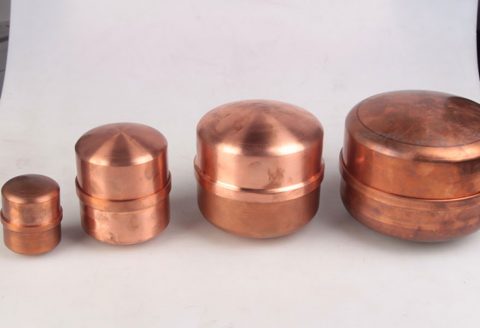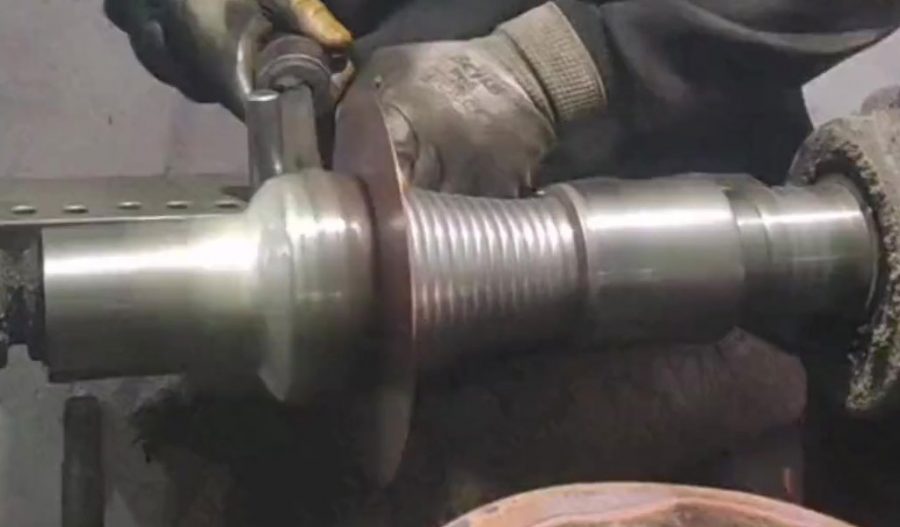
Topological optimization (TO) and additive manufacturing (AM) have emerged as transformative approaches in modern engineering, particularly for designing and fabricating lightweight, high-performance components capable of withstanding extreme load conditions. Aluminum, valued for its high strength-to-weight ratio, corrosion resistance, and manufacturability, is a material of choice in industries such as aerospace, automotive, and biomedical engineering. When combined with spinning, a traditional metal-forming process, and additive manufacturing, a cutting-edge layer-by-layer fabrication technique, the design and production of aluminum components can achieve unprecedented levels of efficiency, performance, and complexity. This article explores the principles, methodologies, and applications of topological optimization for aluminum spinning components under extreme load conditions, alongside the path planning strategies for additive-spinning hybrid manufacturing. It delves into the theoretical foundations, practical implementations, case studies, and future directions, providing a comprehensive resource for researchers, engineers, and practitioners in the field.
The integration of TO with AM and spinning processes addresses critical engineering challenges, such as weight reduction, material efficiency, and structural integrity under high-stress environments. Extreme load conditions, characterized by high mechanical, thermal, or dynamic stresses, demand designs that optimize material distribution while maintaining functionality. Aluminum spinning components, often used in applications like aerospace brackets, automotive wheels, and pressure vessels, benefit significantly from TO, which enables the creation of complex geometries unattainable through conventional manufacturing. The additive-spinning hybrid manufacturing process further enhances this capability by combining the precision and design freedom of AM with the material consolidation and surface quality improvements of spinning. Path planning in this hybrid approach ensures manufacturability, minimizes defects, and optimizes production efficiency.
This article is structured to provide a detailed examination of these topics, beginning with the fundamentals of topological optimization and its relevance to aluminum components, followed by an exploration of extreme load conditions, the mechanics of spinning, and the integration of additive manufacturing. Subsequent sections address path planning strategies, case studies, comparative analyses, and future research directions. Detailed tables are included to compare methodologies, materials, and performance metrics, ensuring a rigorous and scientific presentation.
Fundamentals of Topological Optimization
Definition and Principles
Topological optimization is a mathematical design methodology that optimizes material distribution within a defined design space to achieve specific performance objectives, such as minimizing weight or maximizing stiffness, under given constraints. Unlike traditional design approaches that rely on iterative manual adjustments, TO uses computational algorithms to determine the optimal material layout, often resulting in organic, non-intuitive geometries that are highly efficient. The process is grounded in the Finite Element Method (FEM), where the design space is discretized into elements, and material properties are iteratively adjusted based on load conditions, boundary constraints, and optimization goals.
The primary objective in TO is often to minimize compliance (i.e., maximize stiffness) while adhering to constraints like volume fraction, stress limits, or manufacturing restrictions. Common TO methods include the Solid Isotropic Material with Penalization (SIMP) method, the Level Set Method (LSM), and the Bidirectional Evolutionary Structural Optimization (BESO) method. SIMP, for instance, assigns a density variable to each element, ranging from 0 (void) to 1 (solid), with intermediate values penalized to favor binary outcomes. LSM defines material boundaries using a level-set function, allowing for smooth topological changes, while BESO iteratively adds or removes material based on stress distributions.
Relevance to Aluminum Components
Aluminum’s favorable properties, including a density of approximately 2.7 g/cm³, high corrosion resistance, and excellent machinability, make it ideal for TO applications. In industries like aerospace, where weight reduction directly impacts fuel efficiency and payload capacity, TO can reduce component mass by 20–50% while maintaining or enhancing mechanical performance. For spinning components, such as cylindrical shells, pressure vessels, or wheel rims, TO enables the design of structures with optimized wall thickness and reinforcement patterns, ensuring they withstand extreme loads like high pressure, impact, or fatigue.
TO is particularly effective for aluminum due to its isotropic behavior in many alloys (e.g., 6061, 7075), which simplifies the optimization process compared to anisotropic materials like composites. However, challenges arise in modeling aluminum’s behavior under extreme conditions, such as high strain rates or thermal gradients, which require advanced material models incorporating plasticity, creep, or fatigue properties.
Mathematical Framework
The TO problem can be formulated as:
[ \text{minimize: } C(\rho) = \int_{\Omega} \mathbf{u}^T \mathbf{K} \mathbf{u} , d\Omega ] [ \text{subject to: } \int_{\Omega} \rho , d\Omega \leq V_{\text{max}} ] [ \sigma_{\text{von Mises}} \leq \sigma_{\text{yield}}, \quad 0 < \rho_{\text{min}} \leq \rho \leq 1 ]
Where:
- ( C(\rho) ): Compliance (inverse of stiffness)
- ( \mathbf{u} ): Displacement vector
- ( \mathbf{K} ): Stiffness matrix
- ( \rho ): Density variable
- ( V_{\text{max}} ): Maximum allowable volume
- ( \sigma_{\text{von Mises}} ): Von Mises stress
- ( \sigma_{\text{yield}} ): Yield strength of the material
- ( \Omega ): Design domain
This formulation ensures that the structure minimizes deformation under load while respecting material and manufacturing constraints. For aluminum spinning components, additional constraints may include symmetry to ensure compatibility with spinning processes and minimum wall thickness to prevent buckling.
Extreme Load Conditions in Aluminum Spinning Components
Types of Extreme Loads
Extreme load conditions encompass a range of mechanical and environmental challenges, including:
- High Mechanical Loads: Such as impact forces in automotive crash scenarios or high-pressure loads in pressure vessels.
- Thermal Loads: Resulting from rapid temperature changes, as in aerospace components exposed to re-entry conditions.
- Dynamic Loads: Including vibrations or cyclic loading in rotating machinery, leading to fatigue failure.
- Combined Loads: Scenarios where multiple load types (e.g., mechanical and thermal) act simultaneously, as in turbine blades or engine components.
For aluminum spinning components, these loads are critical in applications like aerospace brackets, which may experience stresses exceeding 500 MPa, or automotive wheels subjected to cyclic loads of 10^6 cycles or more. The yield strength of common aluminum alloys (e.g., 6061-T6: ~276 MPa, 7075-T6: ~503 MPa) sets the baseline for design, but TO can push performance closer to these limits by optimizing material distribution.
Challenges in Design
Designing for extreme loads requires accounting for material nonlinearity, such as plastic deformation or creep, and environmental factors like corrosion or thermal expansion. Aluminum’s relatively low melting point (~660°C) compared to titanium or steel necessitates careful consideration of thermal loads. Additionally, spinning components often have thin-walled structures, making them susceptible to buckling or localized failure under high loads. TO addresses these challenges by:
- Redistributing material to high-stress regions.
- Incorporating lattice structures or variable wall thicknesses.
- Minimizing stress concentrations through smooth geometric transitions.
Case Study: Aerospace Bracket
A notable example is the redesign of an aerospace bracket using TO, as documented in a 2016 study by Seabra et al.. The original bracket, made from aluminum alloy, was optimized using Laser Powder Bed Fusion (L-PBF) to achieve a 28% weight reduction while maintaining functional stress levels. The TO process used SIMP to minimize compliance under a combination of tensile and compressive loads, with constraints on volume and manufacturing feasibility. The optimized design featured organic, branching structures that reduced material usage without compromising strength, demonstrating the power of TO in extreme load scenarios.
Mechanics of Metal Spinning
Overview of Spinning Process
Metal spinning is a forming process where a rotating metal blank is shaped over a mandrel using a roller or tool to create axisymmetric components like cones, cylinders, or hemispheres. For aluminum, spinning is advantageous due to its ductility and low forming forces. The process can be classified into:
- Conventional Spinning: Involves gradual deformation of the blank to conform to the mandrel shape.
- Shear Spinning: Reduces wall thickness while maintaining diameter, ideal for thin-walled components.
- Flow Forming: Combines spinning with axial elongation, used for high-precision parts like pressure vessels.
Spinning produces components with excellent surface finish, high dimensional accuracy (±0.05 mm), and enhanced material properties due to work hardening. However, traditional spinning is limited to axisymmetric geometries, which restricts design freedom compared to AM.
Material Behavior in Spinning
During spinning, aluminum undergoes significant plastic deformation, leading to strain hardening and changes in microstructure. For example, 6061 aluminum may experience a 20–30% increase in yield strength after spinning due to cold working. However, this also introduces residual stresses, which can affect performance under extreme loads. Finite Element Analysis (FEA) is often used to model material flow, stress distribution, and potential defects like wrinkling or cracking.
Integration with Topological Optimization
TO enhances spinning by optimizing the initial blank geometry or wall thickness distribution. For instance, a TO-designed blank can have variable thickness to reinforce high-stress areas while minimizing material in low-stress regions. This approach reduces forming forces and improves manufacturability. However, spinning imposes constraints like axisymmetry, which must be incorporated into the TO algorithm to ensure compatibility.
Additive Manufacturing for Aluminum Components
Overview of Additive Manufacturing
Additive manufacturing, defined by ISO/ASTM 52900:2022, builds components layer by layer from 3D CAD models, offering unparalleled design freedom. For aluminum, common AM processes include:
- Laser Powder Bed Fusion (L-PBF): Uses a laser to fuse aluminum powder (e.g., AlSi10Mg) into complex shapes with high precision (±0.05 mm).
- Directed Energy Deposition (DED): Deposits molten aluminum wire or powder, suitable for large components or repairs.
- Binder Jetting: Bonds aluminum powder with a binder, followed by sintering, offering high throughput but lower density.
L-PBF is particularly suited for TO designs due to its ability to produce intricate geometries like lattice structures or organic shapes. AlSi10Mg, a common AM alloy, offers a yield strength of ~260 MPa and density of 99.7% after printing, making it comparable to wrought aluminum in many applications.
Advantages and Challenges
AM enables the fabrication of TO-optimized designs that are impossible with traditional methods, such as lattice-reinforced brackets or hollow structures. Key advantages include:
- Design Freedom: Complex geometries with minimal support structures.
- Material Efficiency: Near-net-shape production reduces waste.
- Customization: Rapid prototyping for bespoke components.
Challenges include:
- Residual Stresses: Thermal gradients during L-PBF can induce stresses, requiring post-processing like Hot Isostatic Pressing (HIP).
- Surface Quality: As-built surfaces may require machining for spinning compatibility.
- Cost: High powder costs and build times limit scalability.
Additive-Spinning Hybrid Manufacturing
Concept and Rationale
Additive-spinning hybrid manufacturing combines the design freedom of AM with the material consolidation and surface quality improvements of spinning. In this process, AM is used to create a near-net-shape preform with TO-optimized geometry, which is then spun to achieve final dimensions, surface finish, and mechanical properties. This hybrid approach addresses limitations of both processes:
- AM overcomes spinning’s restriction to axisymmetric shapes.
- Spinning mitigates AM’s issues with surface roughness and residual stresses.
For aluminum components under extreme loads, the hybrid process is ideal for applications like aerospace brackets, where TO reduces weight, AM enables complex preforms, and spinning ensures precision and strength.
Process Workflow
The hybrid manufacturing workflow typically involves:
- Design Phase: TO is performed to optimize the preform geometry, incorporating constraints for both AM and spinning (e.g., minimum wall thickness, overhang angles).
- AM Fabrication: The preform is printed using L-PBF or DED, often with AlSi10Mg or 6061 alloys.
- Spinning: The preform is spun over a mandrel to achieve final shape and enhance material properties through work hardening.
- Post-Processing: Includes heat treatment, surface finishing, or machining to meet tolerances.
Path Planning in Hybrid Manufacturing
Path planning is critical to ensure manufacturability and efficiency in the hybrid process. It involves:
- AM Path Planning: Optimizing laser or deposition paths to minimize thermal gradients, reduce support structures, and ensure uniform material deposition. For L-PBF, this includes setting laser power (e.g., 80 W), scan speed (e.g., 1000 mm/s), and hatch spacing (e.g., 90 µm) to minimize residual stresses.
- Spinning Path Planning: Determining roller paths to achieve uniform deformation, minimize defects, and ensure compatibility with the AM preform’s geometry. This requires FEA to predict material flow and stress distribution.
- Integration: Coordinating AM and spinning paths to avoid conflicts, such as ensuring the AM preform’s surface is suitable for roller contact.
Advanced algorithms, such as those based on the adjoint method, are used to optimize paths by minimizing distortion and ensuring compliance with TO constraints. For example, in L-PBF, path planning can incorporate overhang constraints to create self-supporting structures, reducing post-processing costs.
Topological Optimization Methodologies for Hybrid Manufacturing
SIMP Method
The SIMP method is widely used for TO in hybrid manufacturing due to its simplicity and compatibility with FEM. It assigns a density variable to each element, penalizing intermediate densities values to achieve a binary (solid/void) design. For aluminum spinning components, SIMP can optimize wall thickness or lattice structures while respecting spinning constraints like axisymmetry. A case study involving a racing car steering column housing used SIMP to achieve a 40% weight reduction while maintaining stiffness, with the final part fabricated via L-PBF and validated under real conditions.
Level Set Method
The LSM represents material boundaries using a continuous level-set function, allowing for smooth topological changes. It is particularly useful for designing spinning preforms with complex, non-axisymmetric features that are later refined through spinning. LSM has been applied to aerospace brackets, achieving up to 44.8% weight reduction while minimizing residual stresses.
BESO Method
BESO iteratively adds or removes material based on stress distributions, making it suitable for applications where material efficiency is critical. It has been used to optimize aluminum components for space missions, reducing weight by over 50% in some cases.
Comparison of TO Methods
| Method | Description | Advantages | Limitations | Applications |
|---|---|---|---|---|
| SIMP | Density-based optimization with penalization | Simple, computationally efficient | May produce intermediate densities elements | Automotive, aerospace brackets |
| LSM | Boundary-based optimization using level-set function | Smooth geometries, precise boundary control | Computationally intensive | Complex preforms for spinning |
| BESO | Iterative material addition/removal | High material efficiency | Sensitive to initial conditions | Spacecraft components |
Case Studies
Case Study 1: Aerospace Hinge Bracket
A 2019 study optimized a hinge bracket for civil aircraft using TO and AM. The original design, made from 7050 aluminum alloy, was subjected to TO with a volume constraint and minimum flexibility objective. The optimized design reduced weight by 28%, with a maximum stress of 69.4 MPa, well below the yield strength. The preform was printed using L-PBF and spun to achieve final dimensions, demonstrating improved stiffness and manufacturability.
Case Study 2: Automotive Connecting Rod
A connecting rod was redesigned using TO and L-PBF, as reported in a 2022 study. The TO process used SIMP to minimize weight while maintaining mechanical properties under high cyclic loads. The preform was printed with AlSi10Mg and spun to enhance surface finish and fatigue resistance. The final component achieved a 45% weight reduction and was validated under real-world conditions.
Case Study 3: Spacecraft Camera Bracket
A camera bracket for a Surrey Satellite Technology mission was optimized using TO and AM, achieving an 80% weight reduction (from 425 g to 89 g) by switching from titanium to aluminum and using L-PBF. The hybrid process involved spinning the AM preform to ensure dimensional accuracy and surface quality, with path planning optimized to minimize support structures.
Performance Metrics and Comparative Analysis
Mechanical Performance
TO-optimized aluminum components under extreme loads typically exhibit:
- Weight Reduction: 20–50% compared to conventional designs.
- Stiffness: Comparable or improved due to optimized material distribution.
- Fatigue Life: Enhanced through spinning-induced work hardening.
- Stress Distribution: Reduced stress concentrations via smooth geometries.
Manufacturing Metrics
| Metric | Conventional Spinning | AM Only | Hybrid (AM + Spinning) |
|---|---|---|---|
| Geometric Complexity | Limited to axisymmetric shapes | High (lattice, organic shapes) | High with refined surfaces |
| Surface Finish | Excellent (~0.8 µm Ra) | Poor (~10 µm Ra) | Excellent (~1 µm Ra) |
| Residual Stresses | Moderate | High | Reduced through spinning |
| Production Time | Fast for simple shapes | Slow (hours to days) | Moderate (AM + spinning) |
| Material Waste | Moderate | Low | Low |
Cost Analysis
Hybrid manufacturing reduces material waste and post-processing costs compared to AM alone but increases complexity due to the integration of two processes. For small-batch production, the cost of L-PBF remains high due to powder expenses, but spinning reduces the need for extensive machining, offsetting some costs.
Challenges and Limitations
Design Challenges
- Constraint Integration: Incorporating spinning constraints (e.g., axisymmetry) into TO algorithms can limit design freedom.
- Material Modeling: Accurately modeling aluminum’s behavior under extreme loads and during spinning requires complex constitutive models.
- Computational Cost: TO for hybrid manufacturing is computationally intensive, particularly for LSM and large design spaces.
Manufacturing Challenges
- AM Defects: Porosities and residual stresses in L-PBF parts can affect spinning performance.
- Spinning Compatibility: AM preforms may have surface irregularities that complicate roller contact.
- Process Integration: Coordinating AM and spinning requires precise path planning to avoid defects like wrinkling or cracking.
Future Directions
Advanced Algorithms
Future research should focus on developing TO algorithms that seamlessly integrate AM and spinning constraints, such as overhang angles, minimum feature sizes, and roller paths. Machine learning-based approaches could enhance path planning by predicting optimal laser and roller trajectories based on historical data.
Material Innovations
New aluminum alloys tailored for AM and spinning, such as high-strength, low-porosity variants of AlSi10Mg, could improve performance. Functionally graded materials, where properties vary spatially, could further optimize components under extreme loads.
Scalability
Scaling hybrid manufacturing for mass production requires advancements in AM speed, cost reduction in aluminum powders, and automation of spinning processes. Integrated software platforms that combine TO, AM simulation, and spinning path planning could streamline workflows.
Sustainability
The hybrid approach reduces material waste and energy consumption compared to traditional methods, aligning with sustainability goals. Future efforts should quantify environmental impacts and explore recycling strategies for aluminum powders.
Conclusion
The integration of topological optimization with additive-spinning hybrid manufacturing represents a paradigm shift in the design and production of aluminum components for extreme load conditions. By leveraging TO’s ability to optimize material distribution, AM’s design freedom, and spinning’s precision, engineers can create lightweight, high-performance parts for aerospace, automotive, and biomedical applications. Case studies demonstrate significant weight reductions (up to 80%) and improved mechanical properties, while path planning ensures manufacturability and efficiency. Despite challenges like computational complexity and process integration, ongoing advancements in algorithms, materials, and automation promise to unlock the full potential of this approach. This article provides a foundation for understanding and advancing these technologies, with detailed tables and case studies offering practical insights for researchers and practitioners.
Maximize Tooling and CNC Metal Spinning Capabilities.
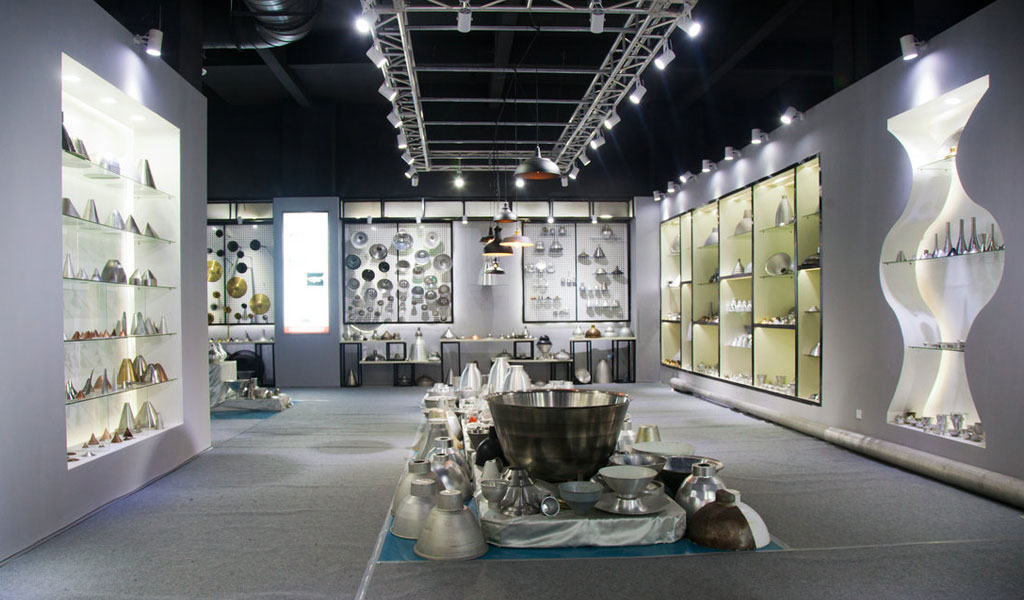
At BE-CU China Metal Spinning company, we make the most of our equipment while monitoring signs of excess wear and stress. In addition, we look into newer, modern equipment and invest in those that can support or increase our manufacturing capabilities. Our team is very mindful of our machines and tools, so we also routinely maintain them to ensure they don’t negatively impact your part’s quality and productivity.
Talk to us today about making a rapid prototype with our CNC metal spinning service. Get a direct quote by chatting with us here or request a free project review.
BE-CU China CNC Metal Spinning service include : CNC Metal Spinning,Metal Spinning Die,Laser Cutting, Tank Heads Spinning,Metal Hemispheres Spinning,Metal Cones Spinning,Metal Dish-Shaped Spinning,Metal Trumpet Spinning,Metal Venturi Spinning,Aluminum Spinning Products,Stainless Steel Spinning Products,Copper Spinning Products,Brass Spinning Products,Steel Spinning Product,Metal Spinnin LED Reflector,Metal Spinning Pressure Vessel,
